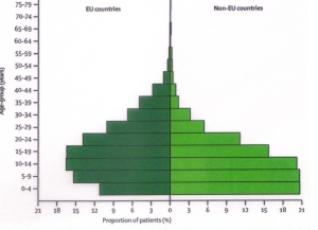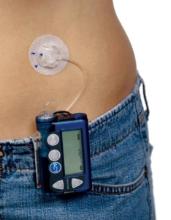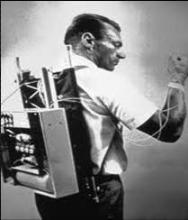Maws & Bairns: Maternal & Child Health in Tayside
Modern Pioneers
Assisted Conception
Louise Brown was famously the world’s first ‘test tube baby’, born in 1978 at Oldham General Hospital. Five years later, the Assisted Conception Unit at Ninewells was set up by Dr John Mills and Dr Geoff James, which resulted in the birth of the first in-vitro fertilisation (IVF) baby in Scotland in September 1984. In those days, egg collection and embryo transfer took place in maternity theatre at the end of the list, and staff numbered 7. By 2012, IVF success rates at Ninewells run consistently above the national average with over 3,000 babies born so far, and the staff of 30 have recently moved into a state-of-the-art facility.
Cystic Fibrosis
Cystic fibrosis (CF) is caused by a faulty gene that controls movement of salt and water in and out of cells within the body that leads to clogging of the lungs and digestive system with thick sticky mucus. This condition is inherited and affects about 100 families in Tayside.
50 years ago, 90% of CF sufferers died in infancy from persistent diarrhoea and malnutrition from pancreatic failure. However, from the mid-1980s, survival into adulthood became more common, principally due to the development of pancreatic enzyme replacement therapies that aided digestion of foodstuffs. With further development of CF care teams, individuals born after 1985 now have more than 50% chance of living past 40 years of age.
A decade-long project co-ordinated from Dundee by Dr Anil Mehta has resulted in the mapping of some 30,000 CF patients across 35 countries in Europe. In 2010, this brought the accolade of ‘Best in Europe’ from 70 submissions to the European Rare Disease Conference.
The Dundee project’s 2010 Lancet paper (see picture, left) showed a smaller proportion of older children and adults with CF in non-EU (as per 2003) countries, possibly due to misclassification of infant deaths and/or higher infant mortality resulting from inequality in access to health care.
(see picture, left) showed a smaller proportion of older children and adults with CF in non-EU (as per 2003) countries, possibly due to misclassification of infant deaths and/or higher infant mortality resulting from inequality in access to health care.
The motto “Think Global, Act Local” was coined by the town planner and social activist Patrick Geddes, who held the Chair of Botany in Dundee from 1888-1919. Dr Anil Mehta’s team at Ninewells have taken this philosophy on board with the European Cystic Fibrosis Registry, enabling countries to match their survival performance against the European average, and guiding politicians to where additional resources are needed in newer EU states to improve diagnosis and treatment.
Evidence from the European Registry was one of the driving forces behind the introduction of newborn screening for CF, which started in Scotland in 2003 and became universal across the UK in 2007.
The Dundee CF team are also involved in a Europe-wide initiative to encourage future patient participation in clinical trials through a poster campaign that illustrates how their peers in former years helped with the development of current medications.
Diabetes mellitus
Dundee has also made a global contribution in the field of childhood diabetes. Professor of Child & Adolescent Health Stephen Greene has chaired the SIGN and NICE guideline committees for Type 1 diabetes in children and adolescents, and is currently President of the International Society for Pediatric and Adolescent Diabetes (ISPAD).
Modern insulin pumps (see picture, right) provide an easy and effective way of delivering insulin to the bloodstream without having to inject using a needle. A small flexible tube connects from a catheter inserted into the skin to the pump and meter, which measures the blood sugar level at any time without the need to perform a prick test. A far cry from the first insulin pump introduced in the 1970s (see picture, left)!
(see picture, right) provide an easy and effective way of delivering insulin to the bloodstream without having to inject using a needle. A small flexible tube connects from a catheter inserted into the skin to the pump and meter, which measures the blood sugar level at any time without the need to perform a prick test. A far cry from the first insulin pump introduced in the 1970s (see picture, left)!
‘Sweet Talk’ is a novel intervention pioneered in Dundee to support young people with diabetes through mobile phone text messaging.(see picture, below)
Images courtesy of Department of Paediatrics of Ninewells Hospital and Tayside Medical History Museum
Back to the exhibition homepage